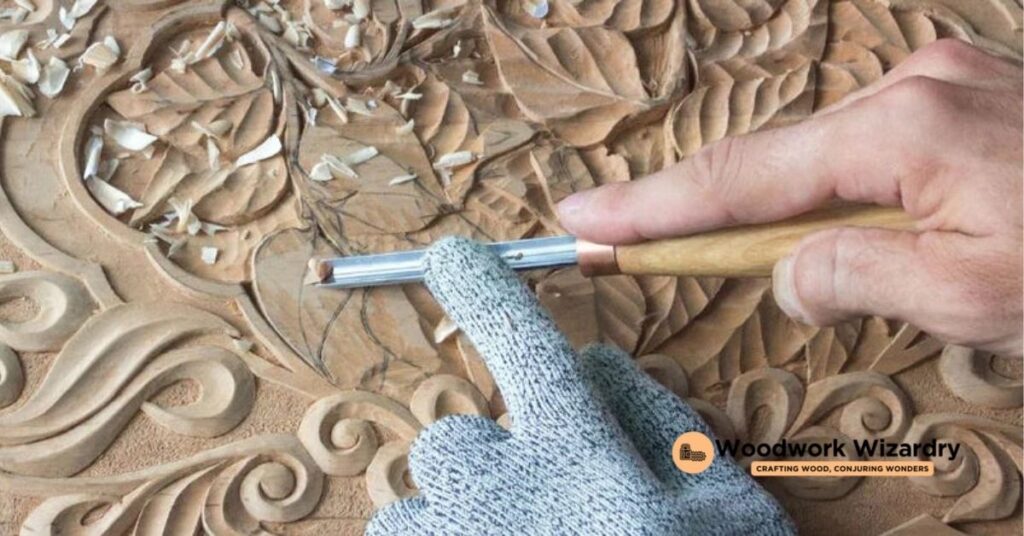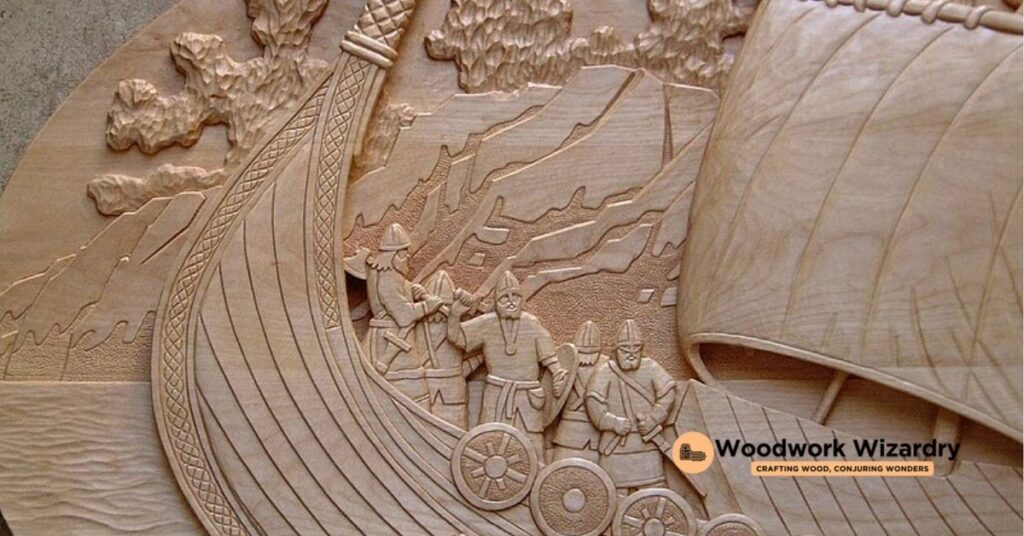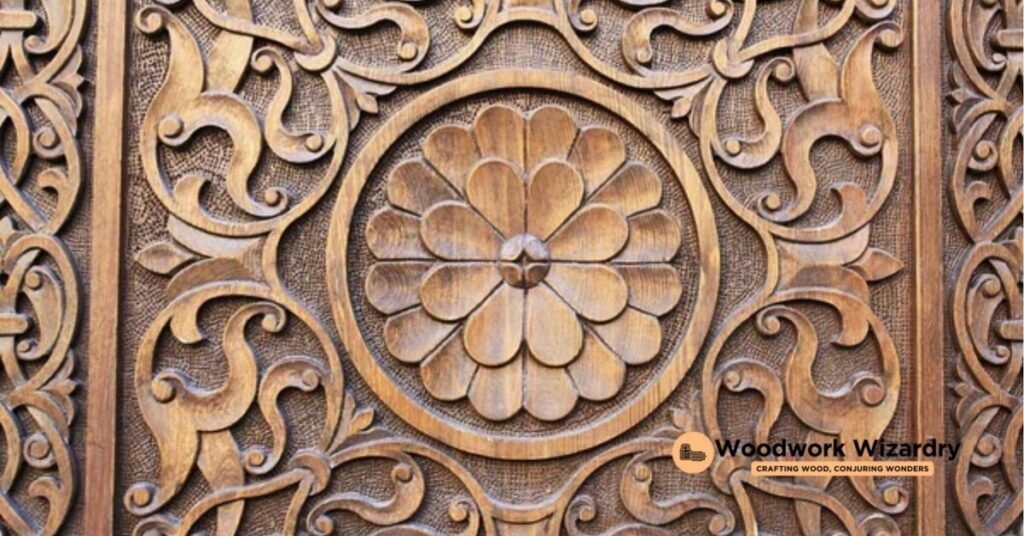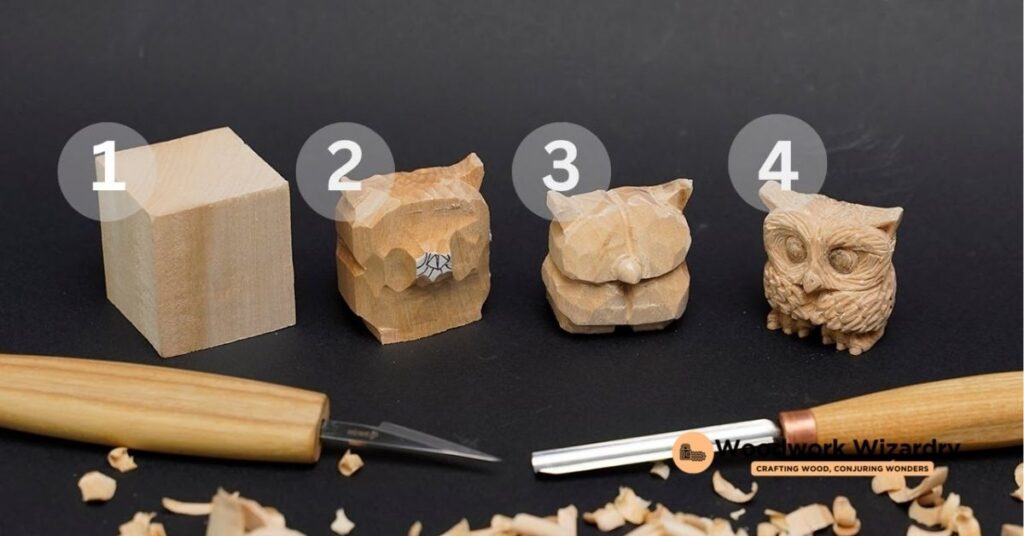When we think of art, our minds often wander to the splash of paint on canvas or the delicate strokes of a pencil. But there’s a world where art emerges not just from adding to a surface, but also from taking away. Welcome to the fascinating realm of relief carving, a technique that breathes life into wood, stone, and other materials by carving into them, creating a stunning visual effect that’s both tactile and visually captivating.
Relief carving is an art form that stands at the crossroads of sculpture and illustration, offering a unique blend of depth and detail that’s unlike any other. It’s a dance of shadows and light, where the material’s surface is transformed into a story, scene, or pattern that seems to leap out, inviting touch and exploration. As we delve into the intricacies of relief carving, we’ll discover its history, techniques, and why it continues to enchant artists and art lovers alike.
What Is Relief Carving
Relief carving stands as a distinctive form of artistry where we, the artists, chisel away at materials such as wood, stone, or even metal to create an image that stands out from its background. This technique involves carefully removing material to different depths, creating a raised effect that gives the carved subject a three-dimensional appearance on a primarily two-dimensional surface. We achieve this by leaving the areas that form the image at a higher level, while the background is lowered, enhancing the perception of depth and perspective.
In relief carving, there are three main types based on the depth of the cut: high relief, low relief (bas-relief), and mid-relief. High relief carvings plunge deeper into the material, causing the figures to project out with a more pronounced shadow, creating a dramatic, lifelike effect. Low relief, or bas-relief, carvings are shallower, making them subtler and ideal for intricate designs on coins, medals, and other small objects. Mid-relief serves as a balance between the two, offering a moderate level of depth.
The process requires a blend of artistic vision and technical skill. We start by sketching our design on the chosen material, then carefully remove layers to reveal the form, working meticulously to ensure precision and detail. Various tools may be used, including gouges, chisels, and mallets, each selected based on the specific textures and effects desired.
Relief carving’s versatility allows for a wide range of artistic expression. From elaborate architectural embellishments to detailed illustrations on furniture or decorative items, it presents endless possibilities for creativity. The art form’s tactile nature not only appeals visually but also invites touch, making it a multi-sensory experience.
By understanding the essence of relief carving, we appreciate its complexity and the skill required to transform the ordinary into extraordinary works of art. This ancient technique continues to captivate both artists and art enthusiasts, reflecting stories, scenes, or patterns in a way that nearly leaps off the surface.
Materials Used in Relief Carving

Exploring the realm of relief carving further, it’s crucial to consider the materials that transform under the artist’s touch, each offering its unique texture, resilience, and aesthetic appeal.
Wood: The most traditional choice, wood boasts a warm, natural grain that can add depth and character to carved pieces. Hardwoods, such as oak, walnut, and mahogany, are prized for their durability and fine grain, ideal for intricate work. Softwoods, like pine and cedar, though easier to carve, require a delicate hand to avoid unwanted damage.
Stone: Marble, limestone, and alabaster are among the favored stones for relief carving. Each has a distinct hardness and translucency, with marble being especially valued for its fine texture and ability to be polished to a high sheen. Stone relief carvings offer permanence and monumental grace, making them a popular choice for memorials and architectural elements.
Clay: A more malleable option, clay allows for adjustments during the carving process, making it a forgiving material for beginners. Once fired, clay works become robust, capturing the nuanced details of the relief work. Ceramics and terracotta reliefs bring an earthy feel to both indoor and outdoor spaces.
Metal: Though less common due to its challenging nature, metal, including bronze, copper, and brass, can be used for relief carving. These materials require specialized tools and techniques but result in works with enduring strength and a distinct metallic luster that ages gracefully.
Synthetic Materials: Modern relief artists sometimes turn to synthetic materials like plastics and resins for their versatility and range of textures. These materials can be manipulated to mimic natural ones and are often used in contemporary works that push the boundaries of traditional relief carving.
Each material brings its unique qualities to relief carving, offering artists a rich palette to draw from. Whether it’s the classic elegance of wood and stone or the innovative potential of synthetics, the choice of material plays a fundamental role in bringing relief art to life. Our journey into the techniques and tools used in relief carving shows how these materials are not just a base but an integral part of the artistic expression.
Tools for Relief Carving
With the foundation set on the materials available for relief carving, moving onto the tools essential for this art form is natural. The right tools not only facilitate the removal of material to achieve different depths but also assist in creating the desired textures and details that make relief carving so special. Here’s a collection of key tools that artists commonly use in relief carving projects.
Gouges
Gouges are indispensable for any relief carver, featuring a curved cutting edge ideal for removing large areas of material or adding texture. They come in various shapes, including U-shaped and V-shaped profiles, each designed for specific tasks. U-shaped gouges help in scooping out wood or stone, whereas V-shaped ones are perfect for creating sharp lines and intricate details.
Chisels
Chisels offer a straight edge that’s perfect for creating clean cuts and defining straight lines. They come in a range of sizes, enabling precise control over the amount of material removed. Chisels are also used to smooth out surfaces after gouging has shaped the majority of the relief.
Mallets
Mallets are paired with chisels and gouges to apply controlled force, aiding in the removal of material without causing damage to the tools or the workpiece. They are made from materials like wood or rubber, each offering different levels of hardness to suit various materials and techniques.
Knives
Specialized carving knives are often employed for their versatility in fine detailing work. They allow carvers to execute precise cuts and are particularly useful in the finishing stages, adding definition and cleaning up any rough edges.
Sharpening Tools
Maintaining the sharpness of carving tools is critical for effective relief carving. Sharpening stones, strops, and honing compounds ensure tools are kept in optimal condition for creating smooth, precise cuts.
These tools collectively enable artists to manipulate materials with precision and creativity, bringing relief carvings to life. Whether working with wood, stone, or synthetics, selecting the appropriate tools is pivotal in transforming a plain surface into a detailed work of art that captivates and inspires.
Types of Relief Carving

Following our exploration of the tools necessary for this art, let’s delve into the types of relief carving that artists commonly employ to bring their imaginative designs to the forefront. Understanding these types is pivotal for aspiring carvers and allows for a deeper appreciation of the craftsmanship involved.
High Relief
High relief carving is characterized by a significant depth from the background, making it appear more pronounced or three-dimensional. These carvings often feature elements that seem to leap out from the surface. Artists achieve this effect by removing a large amount of the material. Historical sculptures and monuments frequently showcase high relief to emphasize details and create a dramatic impact. For instance, many ancient Greek and Roman sculptures utilized high relief to depict intricate scenes of mythology and heroism.
Low Relief (Bas-Relief)
In contrast, low relief or bas-relief carvings are more subtle and less deeply cut than high relief. This technique involves a slight projection from the background. Low relief is ideal for scenes requiring numerous figures and details without the dramatic shadows of higher reliefs. It’s widely used in coin design, where delicate and shallow carvings create detailed images visible under direct light. Architectural decorations also often employ bas-relief to add elegance without overwhelming the overall design.
Mid-Relief
Mid-relief straddles the line between high and low relief, offering a moderate level of depth. It provides a balance, allowing for significant detail and a sense of dimension without the extreme projection seen in high relief. This type of relief carving is less common but serves as an ideal middle ground, accommodating detailed storytelling with a more pronounced effect than low relief yet more subtlety than high relief. Mid-relief can be found in certain architectural elements and artistic panels where the artist seeks to moderate the depth of the carved scenes.
Each type of relief carving offers unique opportunities for expression and creativity, captivating audiences with their distinct approaches to depth and perspective. Artists choose their technique based on the narrative they wish to convey and the impact they aim to achieve, crafting remarkable works that stand the test of time.
Applications of Relief Carving

Relief carving finds its application in a myriad of contexts, each exploiting the unique capabilities of this art form to enhance visual storytelling and decorative appeal. Our exploration into the applications of relief carving will reveal just how versatile and impactful this art can be.
Architectural Elements
In architecture, relief carving serves as a pivotal element for decorating buildings, monuments, and temples. Facades often feature bas-relief panels that depict historical events or mythological scenes, providing not only an aesthetic value but also a narrative depth to structures. Capitals, cornices, and door frames also benefit from relief carving, showcasing patterns and motifs that enhance their architectural beauty.
Furniture and Woodwork
Furniture makers and woodworkers employ relief carving to add elegance and detail to pieces such as cabinets, chairs, and decorative panels. Through skillful carving, ordinary objects transform into works of art, adorned with intricate designs of flora, fauna, and geometrical patterns.
Coinage and Medals
Relief carving extends its reach into the realm of numismatics, where it plays a crucial role in the design of coins and medals. The techniques allow for the creation of raised designs against a flat background, making currency not only functional but also a miniature canvas for artistic expression.
Custom Signage
The use of relief carving in signage offers a classic touch to business names, home addresses, and informational plaques. Unlike printed signs, carved signs possess a timeless quality and craftsmanship that stand out, making them popular choices for establishments aiming for a distinguished presence.
Art and Sculpture
Relief carving is a fundamental technique in the creation of art and sculpture, enabling artists to explore the interplay of light and shadow through varied depths. From monumental works to small-scale reliefs, the technique facilitates expressions ranging from the highly realistic to the abstract.
Each application underscores the adaptability and enduring appeal of relief carving, elevating both functional and decorative objects with its distinctive charm. Through these varied uses, relief carving continues to captivate and inspire, proving its value across different domains.
Tips for Beginners

Venturing into the world of relief carving, beginners might feel overwhelmed by the vast techniques and tools at their disposal. However, with a few strategic tips, newcomers can navigate this art form successfully, producing works that they’re proud of.
Start with the Right Tools
Selecting the proper tools is essential for any relief carving project. Beginners should start with a basic set, including a sturdy chisel, gouache, and mallet. Ensuring these tools are of high quality will not only make the carving process smoother but will also contribute to the overall success of the project.
Choose Soft Woods
When starting, opting for soft woods like basswood or pine can make the carving process much easier. These woods are more forgiving and allow for easier manipulation, which is crucial as you’re learning the techniques.
Practice Basic Techniques
Before diving into complex projects, practicing basic carving techniques on scrap pieces of wood can be incredibly beneficial. This will help you get comfortable with the tools and techniques without the pressure of working on an actual piece.
Keep the Tools Sharp
Maintaining the sharpness of your carving tools is crucial for precision and safety. Dull tools can make the carving process more difficult and can increase the likelihood of accidents. Learning how to sharpen your tools properly will save you lots of frustration.
Study Relief Carving Patterns
Studying various relief carving patterns and styles can inspire and inform your work. Books, online tutorials, and workshops can provide valuable insights into different techniques and designs, helping you develop your unique style.
Work with Templates
Using templates for your initial projects can help you achieve more accurate and satisfying results. Templates act as a guide, ensuring that your proportions and compositions stay consistent as you carve.
Take Your Time
Finally, remember that relief carving is a process that requires patience and practice. Rushing through a project can result in mistakes, so take your time and enjoy the learning process. Making mistakes is part of learning, so embrace them as opportunities to improve.
By following these tips, beginners can set a strong foundation in relief carving and cultivate a practice that brings satisfaction and impressive results.
Conclusion
We’ve journeyed through the captivating world of relief carving, uncovering the depths of creativity and expression this art form offers. From the nuanced subtleties of low relief to the dramatic impact of high relief and the balanced beauty of mid-relief, it’s clear that relief carving holds a special place in the hearts of artists and observers alike. Armed with the right tools and a dash of patience, anyone can embark on this artistic adventure. Whether it’s adorning our homes with bespoke pieces or simply appreciating the skill behind historical works, relief carving enriches our lives in myriad ways. Let’s keep this ancient art alive by continuing to explore, learn, and create. After all, there’s a story in every carving waiting to be told.
Related Posts:







